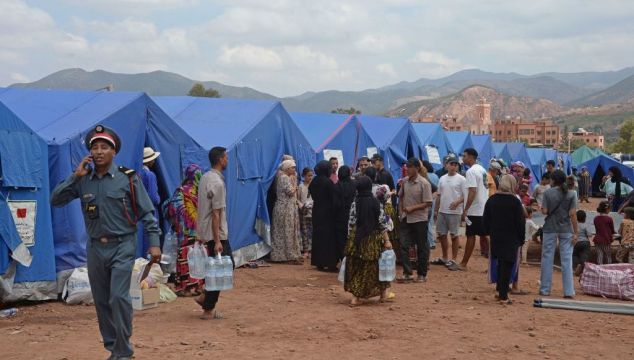Some Moroccan villagers who lost everything in last week's earthquake were fending for themselves in the ruins of their homes on Wednesday, with roads still blocked by landslides and a dearth of essential supplies such as tents.
The 6.8 magnitude quake that struck the High Atlas Mountains late on Friday killed at least 2,901 people and injured 5,530, according to the latest official figures, making it Morocco's deadliest since 1960 and most powerful since at least 1900.
With some survivors voicing frustration at the slow pace of the emergency response, King Mohammed on Tuesday made his first televised appearance since the quake, meeting injured people at a hospital in Marrakech.
Morocco's army is leading relief efforts, backed by aid groups and teams sent by four other countries, but the steep, rugged terrain and damaged roads have made the response patchy, with some of the worst-hit hamlets the last to receive help.
Reuters reporters at various locations in the region said there was a noticeable increase on Wednesday in the number of Moroccan troops, police and relief workers on the roads near the epicentre.
At the same time, in some of the more remote locations, there was still little sign of outside help.
In the tiny village of Outaghrri, which was almost entirely flattened and where four people were killed, homeless survivors have spent the five nights since the quake sleeping outside in the school yard, one of few spaces not covered in rubble.
"It's really hard. It's cold," said Said Ait Hssaine, 27, who returned to the village from his current home in Marrakech to help after the quake. He said survivors were fearful of aftershocks and struggling to come to terms with the deaths and destruction.
"We keep everything inside. You know people here are a little bit hard, and they cannot show they are weak, or they can cry, but inside you just want to go somewhere and cry," he said.
The school itself was still standing, though with huge cracks and holes disfiguring a brightly coloured mural of coloured pencils and rendering the building unsafe. Villagers were using one of the rooms as a storage space for bottles of water and food, mostly donated by Moroccan citizens.
The village had just received a consignment of government-issued tents, but they were not waterproof, a serious concern in a mountainous region where rain and snow are common.
"Winter will come soon, and it will be very difficult for people. Life was difficult here even when people lived in their houses. It snows here. Tents will not solve the problem," said Ouazzo Naima, 60, who lost eight relatives in the quake.
Naima had decided to stay in her damaged house despite huge cracks in the walls, for lack of anywhere else to go. No one had come to inspect the house or assess the risk of collapse.
The mountain village of Adouz, located on a steep slope and mostly reduced to mounds of rubble, was still inaccessible by road, and villagers had set up camp by a river lower down. They were using donkeys to transport supplies up and down the mountainside.
"People need necessities. They are getting for example milk, but this can expire quickly because we do not have anywhere to store it," said resident Fatima Belkas, who was searching for anything to salvage in the debris of her home.
"They need goods like sugar and oil that are not easily perishable. We lack roads as you know - if we had it, many things could have been solved."







